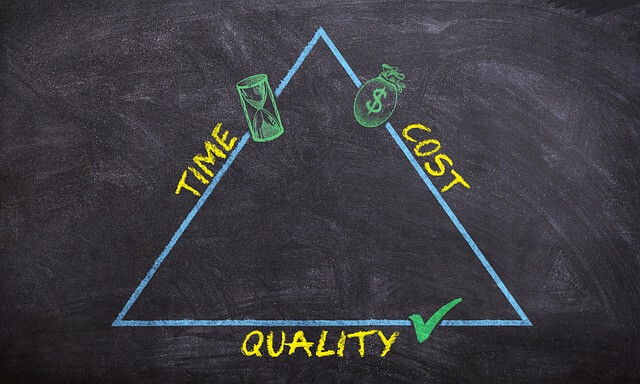Performance management has long been a cornerstone of business success, offering structured approaches to assess, motivate, and enhance employee contributions. But as the workplace evolves, traditional methods struggle to keep pace with remote work, global teams, and dynamic business needs. Enter Artificial Intelligence (AI)—a transformative force reshaping performance management from static, annual evaluations into dynamic, data-driven strategies that foster continuous growth and alignment.
This article explores how AI is revolutionizing performance management, its benefits and challenges, and how businesses can responsibly harness its power for better decision-making and employee development.
What is Performance Management?
Performance management refers to the ongoing process of setting expectations, monitoring performance, offering feedback, and fostering employee growth to align individual output with organizational goals. Traditional performance management systems rely heavily on periodic reviews, often subjective and backward-looking, creating gaps in real-time feedback and continuous improvement.
AI enhances this process by automating data collection, identifying patterns, providing predictive insights, and personalizing development plans—ushering in a new era of performance management.
Key Roles of AI in Performance Management
1. Real-Time Monitoring and Feedback
One of the most valuable applications of AI in performance management is its ability to collect and analyze real-time performance data. AI-powered platforms can continuously monitor metrics like task completion rates, customer interactions, sales figures, and project milestones.
Benefits:
- Provides immediate feedback to employees
- Allows managers to take corrective action promptly
- Enhances employee engagement by recognizing achievements in real-time
Example: A sales team using an AI-driven CRM can receive real-time performance dashboards that track calls, conversions, and revenue. High-performing reps are rewarded early, while underperformers receive instant coaching prompts.
2. Eliminating Bias in Evaluations
Bias—both conscious and unconscious—can distort performance assessments. AI can help reduce this by basing evaluations on objective data rather than subjective opinions. While AI isn’t completely bias-free, it can be trained to prioritize fairness and equity in evaluations.
How AI Helps:
- Analyzes performance metrics without considering irrelevant personal attributes (e.g., gender, race)
- Standardizes evaluation criteria across teams
- Flags anomalies or patterns that suggest biased reviews
Caution: It’s essential to audit AI algorithms regularly to prevent encoding of existing biases in historical data.
3. Predictive Performance Analytics
AI can predict future performance trends based on historical data, behaviors, and external factors. Predictive analytics help organizations identify high-potential employees, at-risk talent, and even future leaders.
Use Cases:
- Forecasting employee turnover based on engagement data
- Identifying who may benefit from additional training
- Creating succession plans based on performance trajectories
By taking a proactive stance, companies can prevent performance issues before they escalate.
4. Personalized Learning and Development
AI tailors learning paths to individual employee needs. Based on performance gaps, learning behavior, and goals, AI recommends targeted courses, mentorship opportunities, and practice modules.
Benefits:
- Makes learning continuous and personalized
- Increases retention and internal mobility
- Aligns development plans with business objectives
Example: A customer service agent struggling with empathy can be recommended an AI-curated module on emotional intelligence, while a high-potential employee might be guided through a leadership track.
5. Sentiment Analysis and Employee Engagement
AI-powered sentiment analysis tools can analyze communication patterns in emails, chat platforms, and survey responses to gauge employee satisfaction, stress levels, and engagement.
Why it Matters:
- Employee engagement strongly correlates with performance
- Early detection of burnout or disengagement allows timely interventions
- Helps build a psychologically safe workplace
Example: A platform like Microsoft Viva uses AI to detect work overload trends and suggests time-off or resource redistribution to managers.
6. Automation of Administrative Tasks
AI can automate repetitive HR tasks involved in performance management, such as:
- Scheduling reviews
- Generating reports
- Notifying managers about check-in timelines
- Tracking goal progress
This frees up time for HR and managers to focus on coaching, strategic planning, and relationship building.
7. Goal Alignment and OKRs
AI tools support agile goal-setting frameworks like Objectives and Key Results (OKRs). They offer:
- Real-time progress tracking
- Suggestions for goal adjustments based on shifting priorities
- Insights into team-wide alignment
When employees see how their work contributes to larger company goals, motivation and accountability improve.
Benefits of AI-Driven Performance Management
Integrating Artificial Intelligence into performance management transforms traditional, often rigid review systems into agile, data-driven frameworks. By automating processes and offering personalized insights, AI enhances both individual and organizational performance. Below are the key benefits businesses can expect:
- Data-Driven Decisions: AI eliminates guesswork by providing actionable insights rooted in real-time data.
- Continuous Improvement: Ongoing feedback and support replace once-a-year reviews, encouraging consistent growth.
- Scalability: AI can evaluate large teams across geographies without losing detail or consistency.
- Improved Retention: Personalized development and proactive engagement lead to higher employee satisfaction.
- Cost Efficiency: Automated tasks reduce administrative overhead, freeing up valuable HR resources.
Challenges and Ethical Considerations
While AI offers remarkable potential, its application in performance management must be carefully managed.
1. Data Privacy and Consent
AI systems often collect vast amounts of personal data. Organizations must ensure:
- Transparency about what data is collected and how it’s used
- Compliance with privacy laws like GDPR or CCPA
- Employee consent and secure data storage
2. Bias in AI Models
If historical data used to train AI includes biased evaluations, the AI can perpetuate or even amplify those biases. Regular audits, diverse training data, and human oversight are crucial.
3. Employee Trust
Surveillance-style tracking can create distrust or anxiety. Clear communication about AI’s purpose and limits builds trust and encourages buy-in.
4. Over-Reliance on Automation
AI is a tool—not a replacement for human judgment. Effective performance management requires empathy, context, and intuition that machines can’t replicate.
Implementing AI in Performance Management: Best Practices
Successfully integrating AI into performance management requires more than just adopting new software. It involves thoughtful planning, change management, ethical considerations, and ongoing refinement. Below are best practices to ensure a smooth and effective implementation:
1. Start with a Clear Objective
Before choosing a tool or platform, define the specific problems AI is intended to solve. Is your goal to reduce bias, automate feedback, personalize development, or improve real-time performance tracking?
Tip: Set SMART goals (Specific, Measurable, Achievable, Relevant, Time-bound) for AI implementation, such as reducing review turnaround time by 40% or improving feedback frequency by 60%.
2. Choose the Right AI Tool
Not all performance management platforms are created equal. Evaluate tools based on your company’s size, complexity, industry, and existing HR tech stack.
Key features to look for:
- Real-time analytics dashboards
- Integration with other HR systems (like LMS, payroll, ATS)
- Transparency in algorithms (“explainable AI”)
- Customization options for your performance metrics
3. Ensure Data Quality and Accessibility
AI is only as good as the data it processes. Clean, consistent, and up-to-date data is essential for meaningful insights.
Action Steps:
- Audit existing performance data for gaps or inconsistencies
- Standardize data entry processes across departments
- Integrate AI tools with all relevant data sources to ensure holistic analysis
4. Address Privacy and Ethical Concerns
AI tools often process sensitive employee information. It’s vital to address privacy, compliance, and ethical issues from the start.
Best practices:
- Clearly communicate what data is being collected and how it will be used
- Obtain employee consent and ensure data anonymization where appropriate
- Comply with GDPR, CCPA, and other data protection regulations
- Conduct regular AI audits to check for algorithmic bias or drift
5. Prioritize Transparency and Explainability
Employees and managers should understand how AI makes decisions or recommendations. Avoid “black box” systems that make outputs difficult to interpret.
How to implement:
- Use tools that explain why certain performance suggestions or scores were made
- Train managers to interpret and communicate AI insights responsibly
- Encourage employees to ask questions and provide feedback on the system
6. Blend AI Insights with Human Judgment
AI should enhance, not replace, human decision-making. Managers should use AI insights as one input in a broader performance conversation.
Tip: Encourage regular 1:1 meetings where managers discuss AI-generated data in context, allowing for nuance and dialogue.
7. Invest in Change Management
Introducing AI in performance management can trigger resistance, especially if employees fear surveillance or job loss. A robust change management strategy is essential.
Key components:
- Involve employees in the selection or pilot phase
- Communicate benefits and address concerns early
- Offer hands-on training for both employees and managers
- Highlight success stories to build trust and buy-in
8. Measure and Iterate
Continuously evaluate the performance and impact of your AI tools. Collect feedback, track KPIs, and be prepared to adjust the system as needed.
Metrics to monitor:
- Manager and employee satisfaction with the tool
- Frequency and quality of feedback
- Goal completion rates
- Retention and performance trends
Pro tip: Create a feedback loop where users can report inaccuracies or suggest improvements to the AI platform.
9. Foster a Culture of Continuous Improvement
AI thrives in environments that value adaptability and learning. Embed continuous feedback and development into your organizational culture.
How to support this:
- Recognize and reward managers who embrace data-driven performance coaching
- Encourage employees to set and update their goals frequently
- Promote a growth mindset where AI insights are seen as tools for development—not surveillance
Real-World Examples
1. Google
Google uses a mix of peer reviews, manager feedback, and data-driven insights to assess performance. Their use of AI in analyzing feedback patterns and team dynamics has helped refine their internal performance systems.
2. IBM
IBM developed an AI-based tool that can predict which employees are likely to quit with 95% accuracy. The system also suggests personalized retention strategies, enabling managers to intervene early.
3. Betterworks
Betterworks is an AI-powered performance management platform used by several Fortune 500 companies. It supports continuous feedback, goal alignment, and engagement tracking, all driven by real-time analytics.
The Future of AI in Performance Management
The future points toward even deeper integration of AI in performance systems. Emerging trends include:
- Emotion AI: Using facial recognition or voice modulation to detect emotional cues during virtual meetings
- AI Coaches: Virtual coaching assistants that provide real-time suggestions during tasks or meetings
- Integrated Ecosystems: Platforms that combine AI-driven performance data with payroll, benefits, and engagement tools for a holistic view of the employee lifecycle
As AI technology advances, organizations that embrace it thoughtfully will see stronger performance cultures, better employee experiences, and more agile workplaces.
Conclusion
AI is not just enhancing performance management—it’s redefining it. By providing real-time insights, reducing bias, personalizing development, and automating routine tasks, AI empowers both managers and employees to perform at their best.
However, organizations must implement AI thoughtfully, ensuring fairness, transparency, and ethical governance. When combined with human empathy and strategic oversight, AI becomes a powerful partner in building high-performance cultures that are fair, inclusive, and future-ready.
Looking to adopt AI-powered performance management in your organization? Start by identifying your performance gaps, explore AI solutions that fit your culture, and take the first step toward a smarter, more dynamic workforce strategy.











